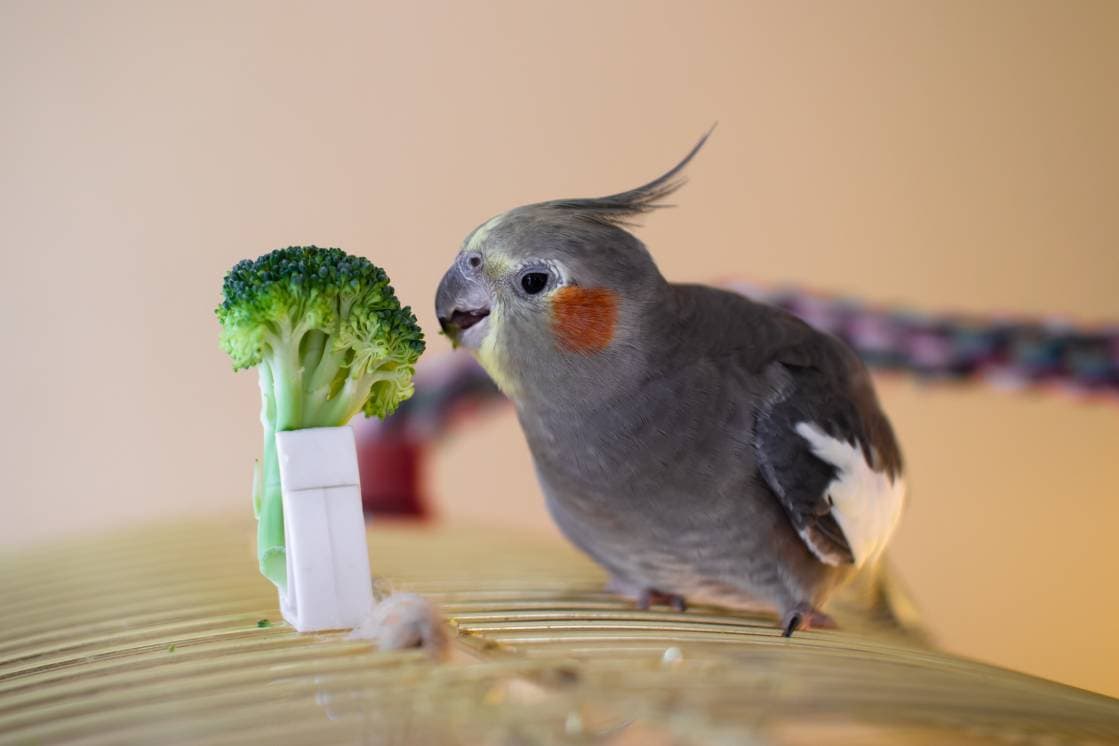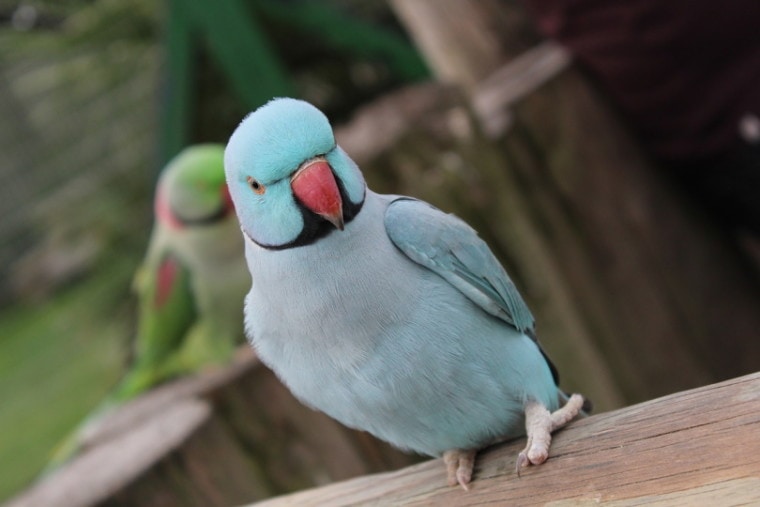
The Budgie is also commonly called a parakeet, and it’s a popular pet in the United States and abroad. These colorful birds are often captive bred, so purchasing them does not disturb their natural habitat, and selective breeding makes it possible to choose the colors and patterns of your bird. If you are thinking of getting one of these pets for your home but would like to know more about it first, keep reading while we discuss colors, diet, habitat set up, and even common health problems to help you make an informed purchase.
Species Overview
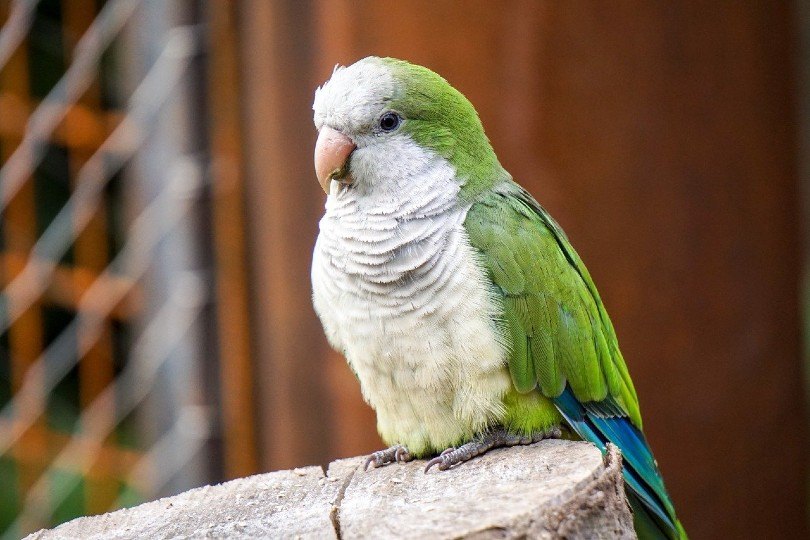
| Common Names: | Budgie, Budgerigar, Parakeet, Shell Parrot, Canary Parrot, Zebra Parrot |
| Scientific Name: | Melopsittacus undulatus |
| Adult Size: | 7 inches |
| Life Expectancy: | 15 – 20 years |
Origin and History
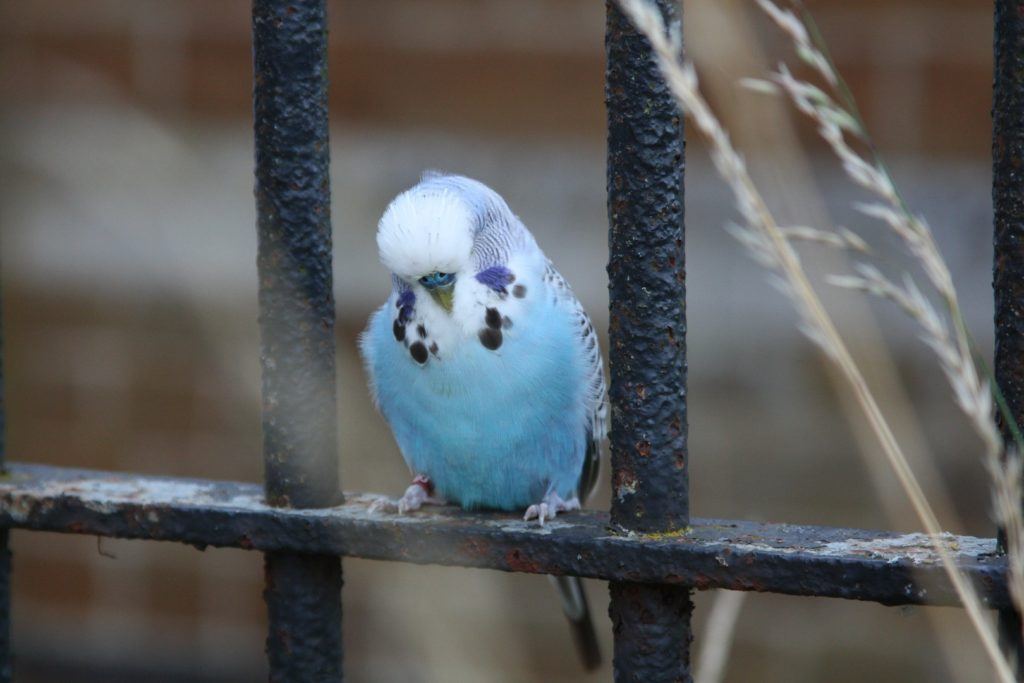
The Budgie is an Australian bird that scientists believe dates back 50,000 to 70,000 years. No one is quite sure how it got its name, but some experts believe it means “good bird” in the native language. George Shaw first described it in 1804, and breeders began captive breeding them in the 1850s. They are currently one of the most popular pets in the United States because they are inexpensive, easy to find, fun to watch, and relatively healthy, with most birds living close to 20 years.
Temperament
Budgies are extremely friendly and playful birds that enjoy being around people. They don’t learn how to say words clearly, but they can mimic speech, and their vocalizations are pleasant and melodic without harsh screeches or squawks. They get along well with other birds, and their small size only requires a small cage, so they are perfect for tiny apartments. Budgies have unique personalities, and the best way to tame them is to get them early and start training immediately. Waiting to train could cause your Budgie to become stubborn and get into mischief.
Speech & Vocalizations
Budgies tend to chatter quite a bit throughout the day. They are a good singer and will sing high-pitched songs in the morning and when they are happy. You will also hear several staccato chirps and longer contact calls that they use to communicate with each other. Beak grinding before they go to sleep usually means it feels safe, while a “tssk tssk” sound can signify they are mad or have a problem with something in their cage. Many male birds can even learn several words.
Budgie Colors and Markings

Budgies come in a wide variety of colors because they have such a long history of captive breeding. There are two series of colors, white and yellow. The white-based colors are white, blue, and grey, while the yellow is green, grey-green, and yellow. It may not sound like a lot, but these two categories produce 32 color mutations, each creating a unique Budgie, and these 32 mutations can create hundreds of secondary mutations and colors.
There are also two sizes of the parakeet, the Standard Budgie and the English Budgies, which are also called Exhibition Budgies, and they are about twice as large as the standard version.
Caring for the Budgie
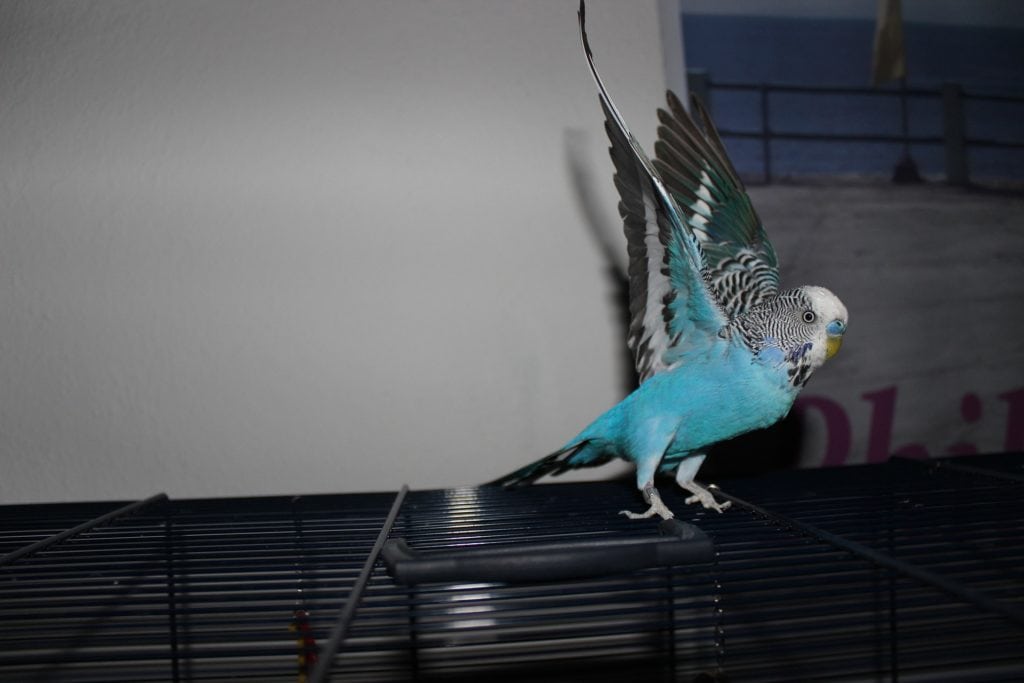
The minimum cage size recommended for your Budgie is 12 inches wide, 18 inches deep, and 18 inches tall. However, these birds like to fly, so we recommend getting the largest cage your budget and space will allow. You will also need to double the minimum cage size if you were to get a second bird.
If you do need to go with the minimum cage size, we recommend letting your bird have plenty of free-range time outside the cage. Your bird will also need several toys, a water bowl, a food bowl, a mineral block, and some fine sand at the bottom of the cage. These items are all easy to find, and only the cage will be expensive.
Once you have the habitat set up, you will feed your Budgie a healthy diet of seeds, grains, and commercial pellets. A cuttlefish bone will help your pet maintain its beak.
Common Health Problems
Your captive-bred indoor Budgie has very few health problems, as most stem from bacteria and parasites that your bird is less likely to encounter. It can sometimes get a condition called bumblefoot from dirty or poor-quality perches. Some birds may also develop tumors that may or may not be cancerous. If you notice any lumps on your bird, we highly recommend taking it to the vet.
Diet and Nutrition

Your Budgie will require a high-quality seed along with fresh fruit and vegetables. Too much seed can lead to obesity, which can cause significant health problems for your pet. Too much seed can also lead to iodine poisoning. Sprouts and vegetable greens can help balance the diet, but they will also require a certain amount of animal proteins or eat additional seed trying to get it. Eggs work great for supplying protein, and many commercial foods will contain them.
Exercise
The best way to exercise your Budgie is to let it out of the cage as often as possible. Your bird will enjoy exploring your home, which will give it plenty of mental stimulation, and flying around will give it the exercise it needs to stay healthy.
Where to Adopt or Buy a Budgie
Budgies are extremely popular birds in the United States, and you can find them in almost any pet store. They usually cost between $20 and $30 for a standard budgie, but you can pay up to $100 or more for an exhibition bird. You may also find them at your local animal shelter, where you can usually get them for a discount.
Final Thoughts
The Budgie is a fantastic pet for smaller apartments, and it makes a great first pet for a child. You can find them in a wide range of colors, so you are sure to find the perfect one for your home. Budgies are easy to find at any pet store and are fairly inexpensive, especially when compared to a cat or a dog.
We hope you have enjoyed this short guide and found it helpful for answering your questions. If we have convinced you to get one of these colorful birds for your home, please share this guide to the Budgie Parakeet on Facebook and Twitter.
Featured Image Credit: Ditney, Pixabay



